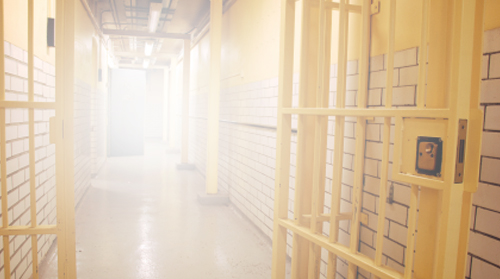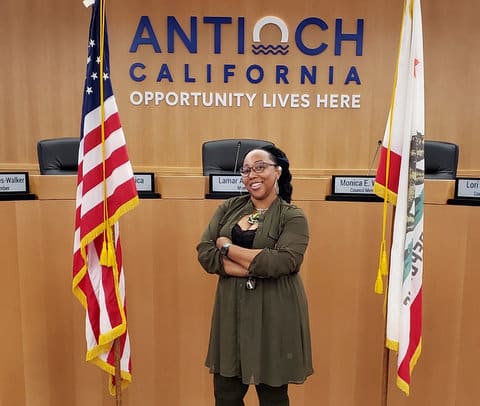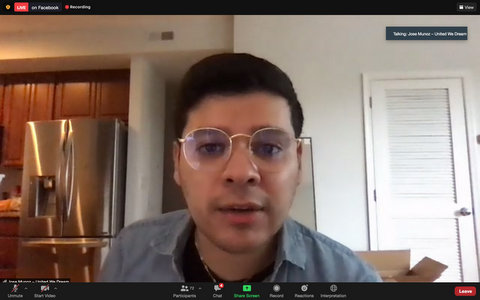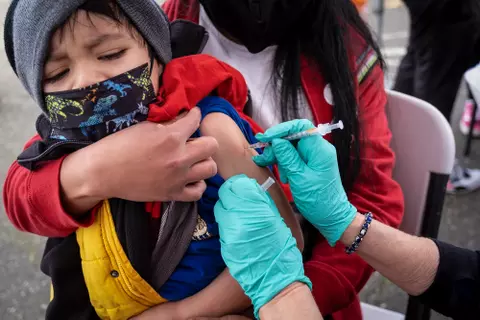
08 Jan Vulnerable Populations Still Excluded From Justice Reform

Interview, Dr. Joseph Marshall
The First Step Act, a bipartisan bill that was signed into law just before Christmas, is being hailed as landmark criminal justice reform legislation. But while the law brings long overdue changes, one person is concerned that it may be reform headed in the wrong direction. Keith Watley, founder and executive director of UnCommon Law, says while thousand of people will benefit, he has concerns about its exclusions. He spoke with Dr. Joseph Marshall, host of Street Soldiers on 106 KMEL radio.
Dr. Joseph Marshall: I guess the initial question is what fueled this and where did this bipartisan support come from? To the best of your understanding, what’s going on here?
Keith Watley: I think it’s really important to acknowledge the hard work put in by some of the supporters and authors of this bill, namely Van Jones and Jessica Jackson Sloan, whose organization, Cut 50, seeks to cut the prison population by 50 percent. Their aim is to reduce mass incarceration, an enormous task with this administration, but Van and his group have found allies in the most unexpected places, speaking a language that perhaps the rest of us haven’t found. It’s been difficult to even get people to talk about these issues, but to pass a bill in this climate is quite a feat.
JM: What was the interest in this for the usually tough-on-crime people?
KW: I have my own thoughts. One is that as much as people complain about large wasteful governments and governmental structures, a lot of time the prison population is overlooked. We ignore that it fails to do just about everything, except isolate people away from their families and the community. It doesn’t help anyone change their lives.
When people are released from prison, but come back at rates of 60 and 70 percent, but we’re spending more on these institutions, then it’s easy to see where the waste is. That speaks to people who are fiscally conservative. It’s hard for them to reconcile those figures when they’re saying, ‘We don’t want to waste government money.’
The bill also seems to be designed in a way that shifts the profits inside the companies running private prisons to the branches of their corporations that run electronic and GPS monitoring and home detention support operation. It’s still paying the same people, just paying them to do something different.
DM: The first thing the bill says is that its reforms will be retroactive under the Fair Sentencing Act, which reduced the disparity between crack and powder cocaine at the federal level. It was 100 to 1, then it was reduced to 18 to 1. Do you know what the levels are now, per this bill?
KW: This bill made that change retroactive, which is a significant piece. It’s one on the few retroactive pieces of this bill though.
JM: Next, it says the bill takes several steps to ease mandatory minimum sentences, help judges to avoid handing down mandatory minimum sentences, eases the three-strike rule, restricts the current practices of stacking gun charges against drug offenders, and increases “good time credits.”
KW: It does give judges more discretion in handing out sentences, even those that carry a mandatory minimum. For some, it actually reduces what that minimum is, even if it’s not as much as we would like.
As far as reducing mass incarceration, it doesn’t affect anyone who is already in prison.
JM: So this would affect people who might get sentenced in the future?
KW: Yes. Now, the idea behind the time-reducing credits is that it creates an incentive and an opportunity for people to participate in the kinds of programs in prison that can make them less likely to come back after their release. It provides funding for those programs, which allows people to shorten their time in prison. It allows for greater use of transitional housing and home detention and electronic monitoring in the place of traditional incarceration.
There are other positive pieces, including that it imposes a legal ban on shackling women during childbirth, which is a big deal.
JM: It’s hard to believe they are even doing that.
KW: There has been a ban on this practice by policy, but not by law. This makes it a law. Cut 50 has really been engaged in bringing more dignity to a most-scared moment of a mother’s life.
Another thing that I think is positive is that it does strongly encourage, if doesn’t quite require, housing people closer to their home communities to better facilitate visits with family members.
JM: Now tell us why you think this bill doesn’t go far enough and what needs to be in here.
KW: One of the biggest concerns is that it excludes people who have been convicted of the most serious crimes by continuing a false narrative that these people are fundamentally different from others. It’s just not true. There is a certain irony in this bill because it’s preventing those who are convicted of the most serious crimes from reducing their sentences by participating in the programs that the bill says are essential to smart criminal justice reform.
It’s not that all violent crimes are excluded but the ones considered the most violent are. I think the biggest challenge was convincing people on the right that enough people were being excluded. They were concerned that too many people would have a pathway home.
My experience is that people who commit violent crimes not only have some of the same factors contributing to their crimes as those who commit non-violent crimes, but they also have some of the best capacity for dramatically changing their lives and then help others avoid violence.
It also excludes people who are undocumented that are housed in federal prison, a huge segment of the population.
Another thing is that this claims to address mass incarceration, but it only affects people in federal prison.
JM: How many people is that?
KW: Less than 10 percent of the US prison population. It doesn’t affect people who are in state prison or county jails which is the overwhelming amount of people who are incarcerated.
So it excludes people convicted of certain violent crimes, those who are undocumented, and those who are otherwise found to be too high a risk by this computer algorithm.
JM: Did you say computer algorithm?
KW: They run a test to predict someone’s risk. The high-risk ones don’t get the credits. Combined with the electronic monitoring, it really implicates this issue of e-carceration.
These private companies that have a profit motive to keep more people under tighter surveillance hold the contracts for electronic monitoring. Michelle Alexander refers to this e-carceration as the next generation of racial and social control, which in her words could prove more dangerous and difficult to challenge than the one we hope to leave behind.
It’s a really dangerous aspect of this bill that hasn’t got enough attention.
JM: It’s called First Step and that makes you think there will be a second or third. Do you think there will be more reform?
KW: I’m confident that is the intent of people like Van Jones and Jessica Sloan. I just want to make sure that they don’t continue to make compromises that further marginalize vulnerable populations.
This interview has been edited for clarity and length.





Candis Cousins
Posted at 23:31h, 10 JanuaryI would like to be involved in projects at San Quentin. I am a retired clinical psychologist. I was part of a project at SQ with Marin Shakespeare Company and I am eager to return do more work.